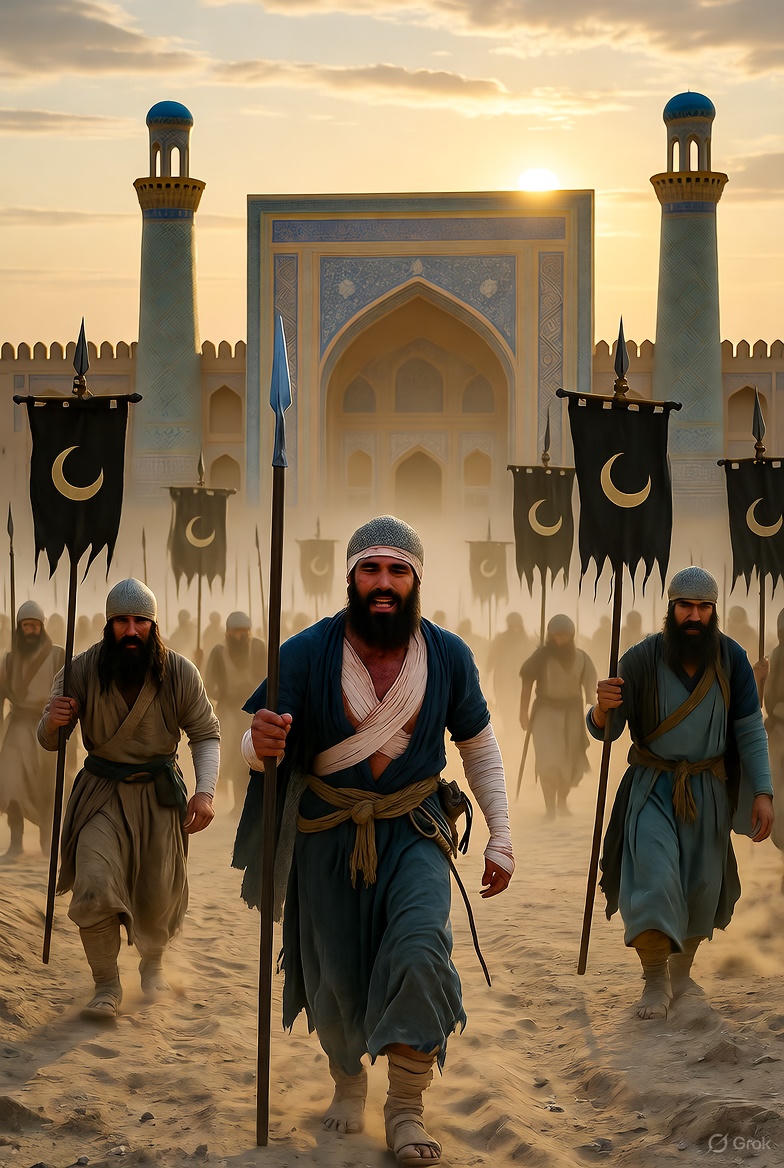Picture this: a scorching summer sun beating down on a narrow, treacherous mountain pass in the heart of Central Asia, where the fate of empires hung by a thread. In July 731 CE, amid the rugged terrain of the Takhtakaracha Pass in what is now Uzbekistan, an epic clash unfolded that would reshape the trajectory of Islamic expansion and Turkic resistance. The Battle of the Defile, also known as the Battle of the Pass or Waqʿat al-Shʿib in Arabic, pitted the mighty Umayyad Caliphate against the nomadic Türgesh Khaganate and their local allies. It wasn’t just a skirmish; it was a brutal, three-day ordeal of ambush, desperation, and survival that left tens of thousands dead and echoed through centuries of history. While often overshadowed by flashier battles like Tours or Talas, this confrontation reveals the gritty realities of 8th-century warfare, imperial overreach, and the unyielding spirit of underdogs. We’ll unpack the intricate details of this forgotten gem—drawing from chroniclers like al-Tabari and modern analyses—before distilling its outcomes into motivational fuel for your daily grind. Get ready for a ride through history that’s as educational as it is exhilarating, peppered with quirky facts to keep the sands of time from feeling too dry.
To set the stage, we must rewind to the early 8th century, when the Umayyad Caliphate was at the zenith of its power. Founded in 661 CE after the First Fitna, the Umayyads transformed the nascent Islamic state into a sprawling empire stretching from Iberia to India. Under caliphs like Abd al-Malik and al-Walid I, they pursued aggressive expansion, fueled by a mix of religious zeal, economic incentives (like tribute and slaves), and military innovation. Central Asia, known as Transoxiana or Mawara’un-Nahr (“what is beyond the river,” referring to the Oxus or Amu Darya), became a prime target. This region, encompassing modern Uzbekistan, Tajikistan, and parts of Kazakhstan, was a crossroads of the Silk Road, rich in fertile valleys, bustling cities like Samarkand and Bukhara, and resources such as silver mines and horses. But it was also a hotbed of resistance, inhabited by Sogdians (Iranian-speaking merchants and farmers), Turks, and other groups who chafed under Arab rule.
The conquest began in earnest under Qutayba ibn Muslim, the legendary governor of Khurasan (eastern Iran and Afghanistan) from 705 to 715. Qutayba, a master strategist from the Banu Bakr tribe, led annual campaigns deep into Transoxiana, capturing Samarkand in 712 after a fierce siege where he reportedly used mangonels to hurl stones and naphtha. He established garrisons, imposed taxes (jizya on non-Muslims), and even resettled Arab tribes to consolidate control. Fun fact: Qutayba once tricked the Sogdians by pretending to withdraw, only to return and slaughter resistors— a tactic that earned him both admiration and infamy. By 715, he had pushed to the Jaxartes River (Syr Darya), clashing with the Türgesh, a Western Turkic confederation led by the charismatic Khagan Suluk (also known as Suluk Chor or Baga Tarkhan).
The Türgesh, descendants of the Western Turkic Khaganate that collapsed in the 650s, were nomadic horsemen par excellence. Based in the Ili River valley (modern Kazakhstan), they excelled in mobile warfare: hit-and-run raids, feigned retreats, and archery from horseback. Suluk, who rose to power around 716, was a shrewd diplomat and warrior, allying with local rulers like the Ikhshid of Sogdia and the kings of Shash (Tashkent) and Ferghana. They viewed the Arabs as invaders disrupting trade and imposing alien customs, such as forced conversion or tribute. In 719, Sogdian envoys petitioned the Chinese Tang Dynasty and the Türgesh for aid, sparking a decade of conflict known as the Arab-Türgesh Wars.
Early Umayyad setbacks set the tone for the Defile. In 724, under Governor Muslim ibn Sa’id al-Kilabi, an expedition suffered the “Day of Thirst,” where thousands perished from dehydration after Türgesh forces cut off water supplies near the Zarafshan River. Survivors limped back, morale shattered. By 728, another governor, Ashras ibn Abd Allah al-Sulami, abandoned most of Transoxiana after a failed campaign, retaining only Bukhara and Samarkand as isolated outposts. The caliph in Damascus, Hisham ibn Abd al-Malik (r. 724-743), a prudent administrator who reformed finances and built frontier forts, grew alarmed. He appointed Junayd ibn Abd al-Rahman al-Murri as governor of Khurasan in 730, tasking him with reversing the tide.
Junayd, from the Murrah tribe of Quraysh, was no novice. He had served in Sindh (modern Pakistan) earlier, where he expanded Umayyad holdings after Muhammad ibn al-Qasim’s conquests. Arriving in Merv (Khurasan’s capital), Junayd faced immediate challenges: rebellions in Tokharistan (northern Afghanistan), where local princes like the Yabghu of Tokharistan defied Arab authority. To quell these, he diverted 28,000 troops from his main force, leaving him with perhaps 40,000-50,000 men for the Transoxiana campaign—a mix of Arab tribesmen (Tamim, Azd, Rabi’ah), Syrian reinforcements, and local mawali (non-Arab Muslim converts). His army was infantry-heavy, equipped with spears, swords, bows, and chain mail, relying on disciplined formations like the spear wall.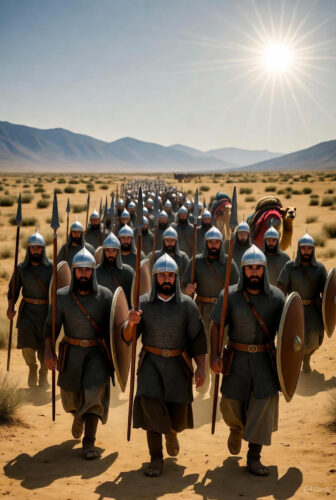
In early 731, Suluk besieged Samarkand with a massive force—estimates vary, but likely over 40,000, including Türgesh cavalry and allied infantry from Sogdia, Shash, and Ferghana. The city’s governor, Sawra ibn al-Hurr al-Abani, held out with 12,000 men, sending urgent pleas for relief. Junayd mobilized, crossing the Oxus at Amul (modern Turkmenabat) and marching northeast toward the Zarafshan Valley. The route took them through the Takhtakaracha Pass, a narrow defile flanked by steep hills—perfect for ambush, but necessary to reach Samarkand quickly. The pass, about 10-15 km long, featured rocky slopes and limited water, making it a chokepoint.
The battle erupted in July 731. Junayd’s army, fatigued from the march, halted in the pass to eat and rest. According to al-Tabari, the primary source (a 9th-10th century historian who compiled earlier accounts), the Arabs were caught off guard when Türgesh scouts spotted them. Suluk, ever the opportunist, launched a surprise attack with horse archers, showering arrows from the heights. Chaos ensued. Junayd rallied his men, forming a defensive perimeter with earthworks, baggage wagons, and a spear wall. The first day’s fighting was intense: Türgesh cavalry charged, but the Arab lines held, repelling assaults on horseback and dismounted attacks. Casualties mounted, but the Umayyads inflicted losses too, using crossbows and slings.
Nightfall brought no respite. The Türgesh encircled the camp, cutting off escape. On the second day, Suluk intensified the siege, probing for weaknesses. Junayd, desperate, sent messengers to Sawra in Samarkand, ordering a relief attack on the Türgesh rear. Sawra complied, leading his 12,000 out. But Suluk anticipated this, setting the grasslands ablaze to hinder them. Sawra’s force charged through the flames—a harrowing scene of smoke, fire, and arrows. They broke through briefly, distracting the Türgesh and allowing Junayd to push forward. However, Sawra’s men were decimated; he himself fell, and only a handful returned to Samarkand. Fun tidbit: Some accounts mention freed slaves joining the fight, arming themselves with tent poles and hides as improvised shields— a testament to the desperation.
The third day saw the climax. As Junayd’s column snaked through the pass, Suluk unleashed a final assault, targeting the rearguard. The Arabs fought ferociously, inching toward safety. By dusk, they broke free, reaching Samarkand after three days of hell. The siege lifted, but at what cost? Estimates vary: Ibn A’tham al-Kufi (9th century) claims 20,000 Arab dead and 10,000 Türgesh; modern historian Khalid Yahya Blankinship suggests 25,000-30,000 Umayyad losses, leaving just 15,000 survivors from the Khurasani core. Suluk’s forces, though victorious in inflicting pain, couldn’t annihilate the relief army, perhaps due to their own casualties or logistical strains.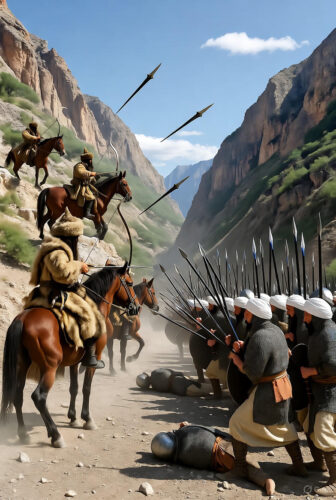
Junayd hunkered down in Samarkand for four months until October 731, nursing his battered army. The Türgesh, undeterred, besieged Bukhara. Junayd sallied forth in November, defeating Suluk in minor engagements and lifting that siege on Mihragan (a Zoroastrian festival day). He then evacuated Muslim civilians from Samarkand, retreating south of the Oxus—a strategic withdrawal to rebuild. The caliph sent 20,000 Iraqi reinforcements and levied 15,000 locals, but the damage was done. The battle exposed Umayyad vulnerabilities: overextended supply lines, reliance on infantry against mobile nomads, and internal divisions among Arab tribes.
The broader context illuminates why this mattered. The Umayyads, already stretched by wars in Byzantium, Iberia, and India, faced fiscal strain. Hisham’s reforms, like standardizing coinage and irrigation projects, couldn’t offset the manpower drain. In Transoxiana, the heavy taxes and cultural impositions fueled revolts; mawali resented second-class status, sowing seeds for the Abbasid Revolution (747-750), which began in Khurasan. The Türgesh, meanwhile, peaked under Suluk, who married a Chinese princess in 731 for Tang support. But internal strife killed Suluk in 737, collapsing the khaganate by 741 amid Tang interventions. This vacuum allowed the Umayyads (and later Abbasids) to reclaim Transoxiana, culminating in the Battle of Talas (751), where Arabs and Tang clashed, halting Chinese expansion westward.
Historians debate the battle’s nature. Hugh Kennedy, in “The Armies of the Caliphs,” highlights the contrast: Arab tribal levies vs. Türgesh professionals. Blankinship, in “The End of the Jihad State,” calls it a catastrophe that accelerated Umayyad decline. Fun fact: Al-Tabari’s account, based on earlier narrators like al-Mada’ini, includes vivid details like soldiers dying of thirst or heat, evoking modern war stories. Archaeological evidence from the pass is scarce, but Longmen Grottoes in China and Sogdian murals depict similar nomadic warfare.
Post-battle, Junayd’s career waned; he died in 734 amid further campaigns. Suluk’s raids continued until his death. The Defile stalled Umayyad momentum for a decade, limiting control to southern enclaves like Kish and al-Saghaniyan. It underscored the limits of empire: geography favored defenders, and cultural resistance endured. By the Abbasid era, Transoxiana Islamized gradually through trade and Sufi missionaries, not conquest alone. The region’s legacy includes luminaries like al-Bukhari (hadith compiler) and Avicenna, blending Persian, Turkic, and Arab influences.
Shifting to legacy: The battle’s Pyrrhic outcome—survival at ruinous cost—teaches that victories can be deceptive, but resilience turns defeats into stepping stones. Here’s how to apply it personally:
– **Anticipate Ambushes in Daily Routines**: Like Junayd’s halt for a meal leading to attack, life’s surprises strike when complacent. Schedule weekly “risk audits”—review finances or health for 30 minutes every Sunday to spot potential issues early.
– **Build Defensive Formations in Relationships**: The Arab spear wall saved lives; cultivate a support network. Commit to monthly check-ins with three close friends, sharing goals and challenges to create mutual aid.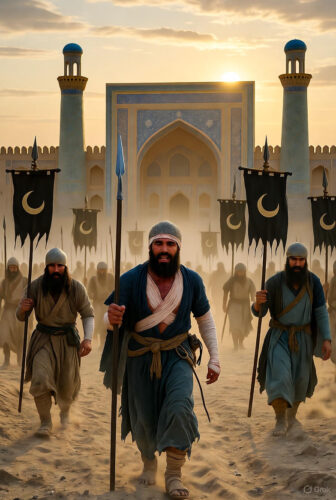
– **Leverage Diversions for Breakthroughs**: Sawra’s fiery charge created an opening. When stuck, create distractions—switch tasks for 15 minutes during work blocks to refresh and attack problems anew.
– **Recover from Losses with Strategic Retreats**: Junayd’s evacuation preserved core strength. After setbacks like job loss, take a “recovery month”: update skills via free online courses while job hunting daily.
– **Turn Casualties into Lessons for Growth**: Massive losses led to reinforcements; analyze failures. Keep a “lessons journal”—note one takeaway from every mistake, reviewing quarterly to avoid repeats.
A Step-by-Step Plan to Embody Defile Resilience:
- **Week 1: Scout the Terrain** – Map your goals like Junayd’s march. List top three objectives, identifying obstacles via brainstorming sessions.
- **Weeks 2-3: Fortify Defenses** – Build habits like daily exercise (30 minutes) and reading (20 pages) to strengthen body and mind against stress.
- **Month 2: Simulate Ambushes** – Role-play scenarios, e.g., practice interviews or budget cuts, to build adaptability.
- **Month 3: Launch Relief Efforts** – Tackle a stalled project with a “diversion tactic”—collaborate with a mentor for fresh input.
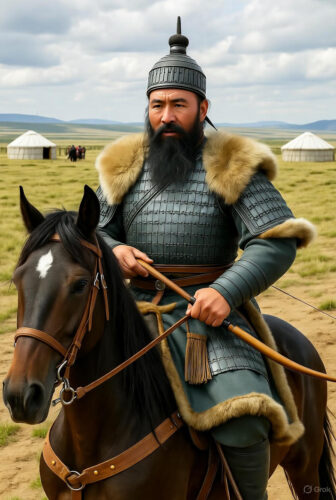
- **Ongoing: Rebuild and Advance** – Quarterly reviews: Celebrate wins, adjust plans, ensuring steady progress like post-battle recovery.
The Defile reminds us: In the pass of life, ambushes come, but survivors emerge stronger. Charge ahead!

